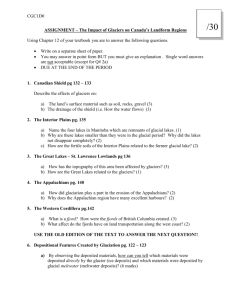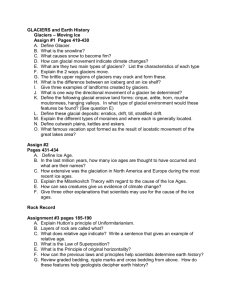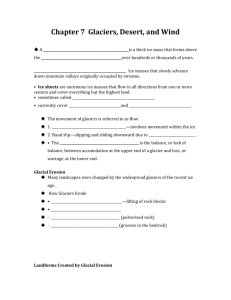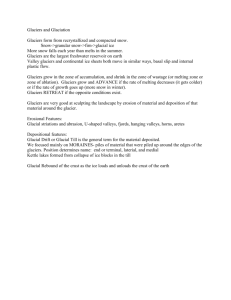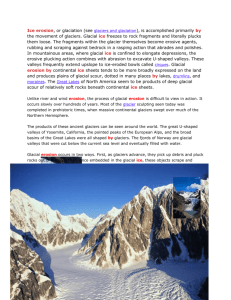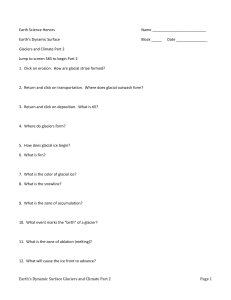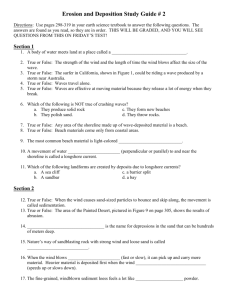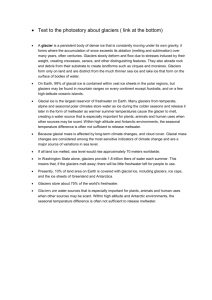File
advertisement
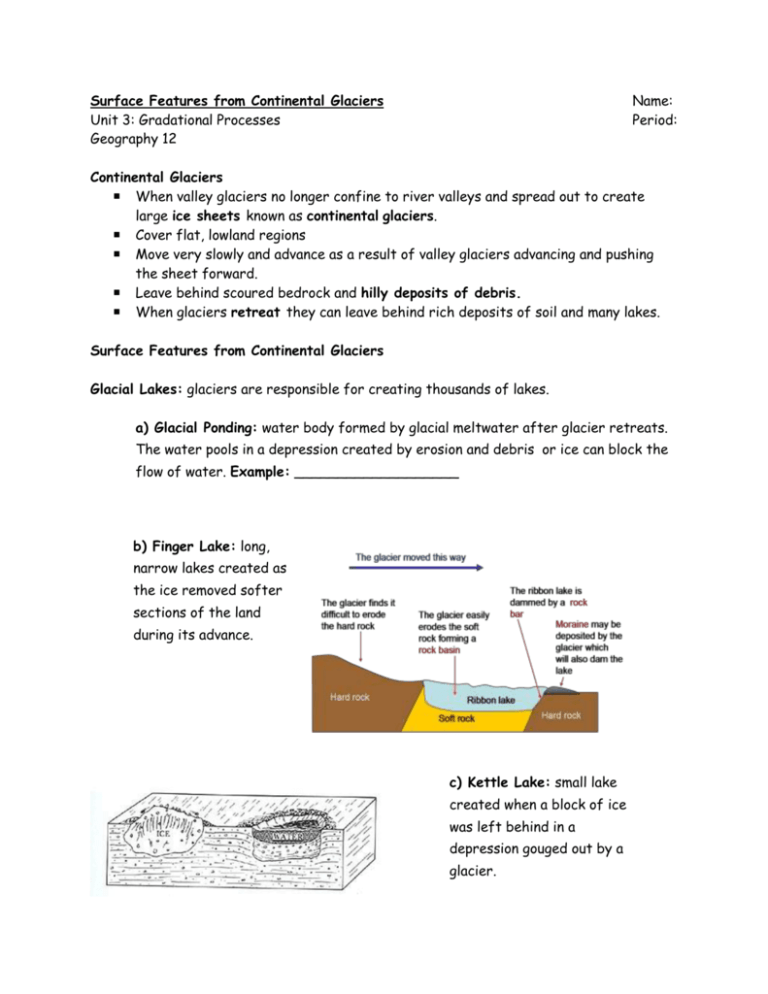
Surface Features from Continental Glaciers Unit 3: Gradational Processes Geography 12 Name: Period: Continental Glaciers When valley glaciers no longer confine to river valleys and spread out to create large ice sheets known as continental glaciers. Cover flat, lowland regions Move very slowly and advance as a result of valley glaciers advancing and pushing the sheet forward. Leave behind scoured bedrock and hilly deposits of debris. When glaciers retreat they can leave behind rich deposits of soil and many lakes. Surface Features from Continental Glaciers Glacial Lakes: glaciers are responsible for creating thousands of lakes. a) Glacial Ponding: water body formed by glacial meltwater after glacier retreats. The water pools in a depression created by erosion and debris or ice can block the flow of water. Example: ___________________ b) Finger Lake: long, narrow lakes created as the ice removed softer sections of the land during its advance. c) Kettle Lake: small lake created when a block of ice was left behind in a depression gouged out by a glacier. Glacial Debris: continental glaciers retreated as temperatures warmed, the ice was carrying its maximum load and dropped the eroded material. This debris is known as glacial till. a) Outwash Plain: large plain of debris formed as water carries deposits once held in the layers of ice. b) Glacial Erratics: isolated boulders dropped off by ice. c) Drumlins: tear-shaped hills formed parallel to the direction of the ice movement. Usually occur in groups. d) Eskers: snake like formations that run along glaciated countryside. They are formed when meltwater flowed under the icecap and carried glacial debris and deposited layers of sands and gravel on top of till.


